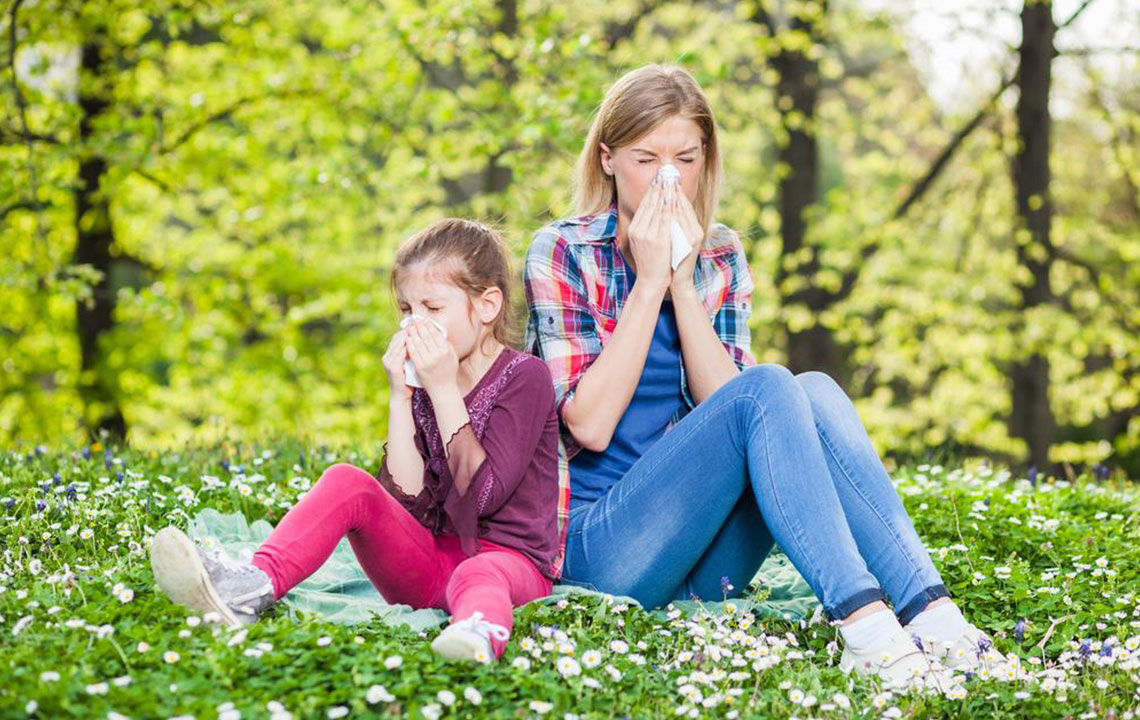All You Need to Know about Pollen Allergy
The mild winter warm days have a surprise accompanying them, an increase in the pollen count around you. The pollen grains in the air are a count of the pollens of plants such as grass, olive or ash in the air. This pollen count is measured in order to understand the pollens in the atmosphere.

The state does release a national survey of the pollen grains in the air. There are several ways to measure the pollen count, one of the ways is to take a silicon grease clad rod and rotate it in the air to collect all the pollen. Periodic rotation of the rod occurs through an entire 24 hour day. This rod is then removed and then is taken to a lab to get analyzed in order to understand the type of pollen in the air and the concentration of the pollen present in that air.
Another method of measuring pollen count is using the 7-day volumetric spore trap. This is done by using a Burkard trap. The direction of the wind is determined and this device is kept in the wind and air is drawn by a pump. The rotating rod has a sticky film on it that helps to trap the grain. During a course of seven days, the drum rotates very slowly in one direction. These 7 days are used to collect particles in order to aid the process of measuring the pollen grains. This tape on the drum is then removed and tested for pollen count.
The actual allergy to pollen is referred to as hay fever. An allergic reaction can be triggered due to pollen allergy. This can affect your asthma, sinus and respiratory tract. Pollen is one of the highest allergens in the United States of America. A disorder in the immune system can cause allergy and people who have never contracted pollen allergy may also suffer from it. Hay fever is predominant in the population and can cause watery eyes, itchiness or conjunctivitis. The risk of allergy is dependent on the host or the environment. A person can get tested for an allergy with a test that includes pricking a patients arm. This area contains the least amount of allergy. A blood test can also be conducted to determine an allergy.
Pollen allergy may cause you to dread the changes of seasons. Preparing and planning ahead is a way to combat the allergen and tackle the allergy. To know the forecast of the amount of pollen grains in the air and keep a track of the same you can access or follow the National Allergy Forecast. This will help you plan and lower the risk factor of a pollen allergy around the places you live and work and can aid in applying precautions.
There are different types of pollen in the air and allergies can be caused by these different types of pollen. People can also be allergic to different pollens at one time. Knowing the pollen that may cause your allergy is also essential towards precaution. Pollen can also cause other allergies to flare up.
There are certain remedies that may provide relief from allergies are
A rinse with saline water should help tame the allergy. This rinse should be on a precautionary level before you feel an allergy. As the seasons are unpredictable, this may seem to be an important start. This saline water can be spritz into the nose daily in order to wash away the pollen. This has helped people get relief from nasal congestion.
The monounsaturated fat in meat and dairy products also increases the risk of contracting hay fever three times more likely than people who do not consume the fat. Fish oil can also help fight the chemicals that contribute in an allergic reaction. A supplement of fish oil which is consumed daily can help reduce the risk of contracting an allergy. Butterbur has proved to be the most beneficial amongst the herbal remedies available for pollen allergy. Acupuncture has also been popular in relieving the hay fever. An Indian spice called turmeric contains curcumin. This is a decongestant and may aid in the relief of allergy symptoms. Pollen is mostly released in the first light or the morning; it is advisable to go out in the evenings. A morning walk should be avoided. Windows should be shut and make sure you have a regular shower once you enter your house. In addition to this, when you step outdoors, ensure you close your mouth and nose with a mask. This will reduce the exposure to pollen and will, therefore, lower the risk of contracting any allergic reaction.











